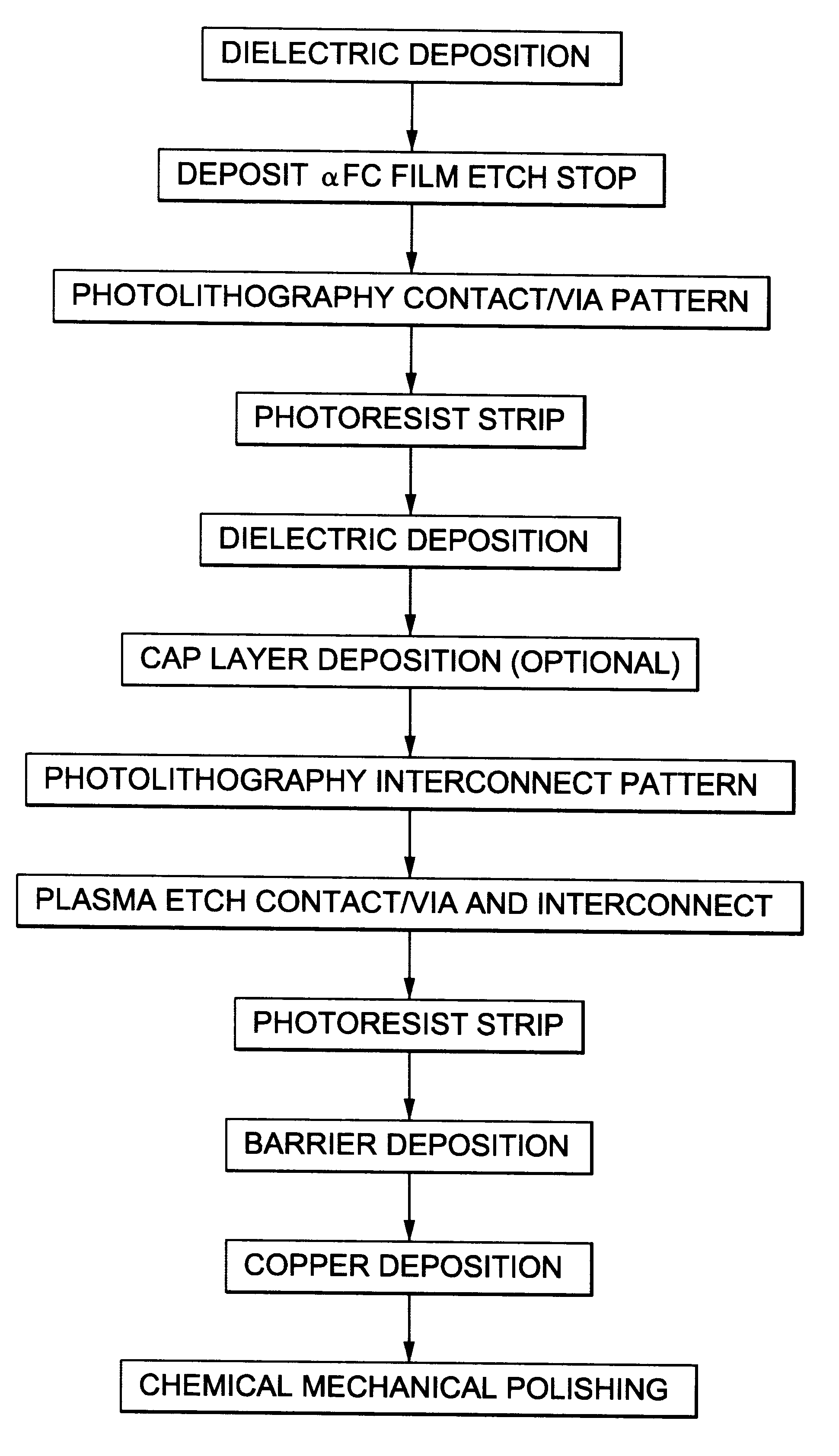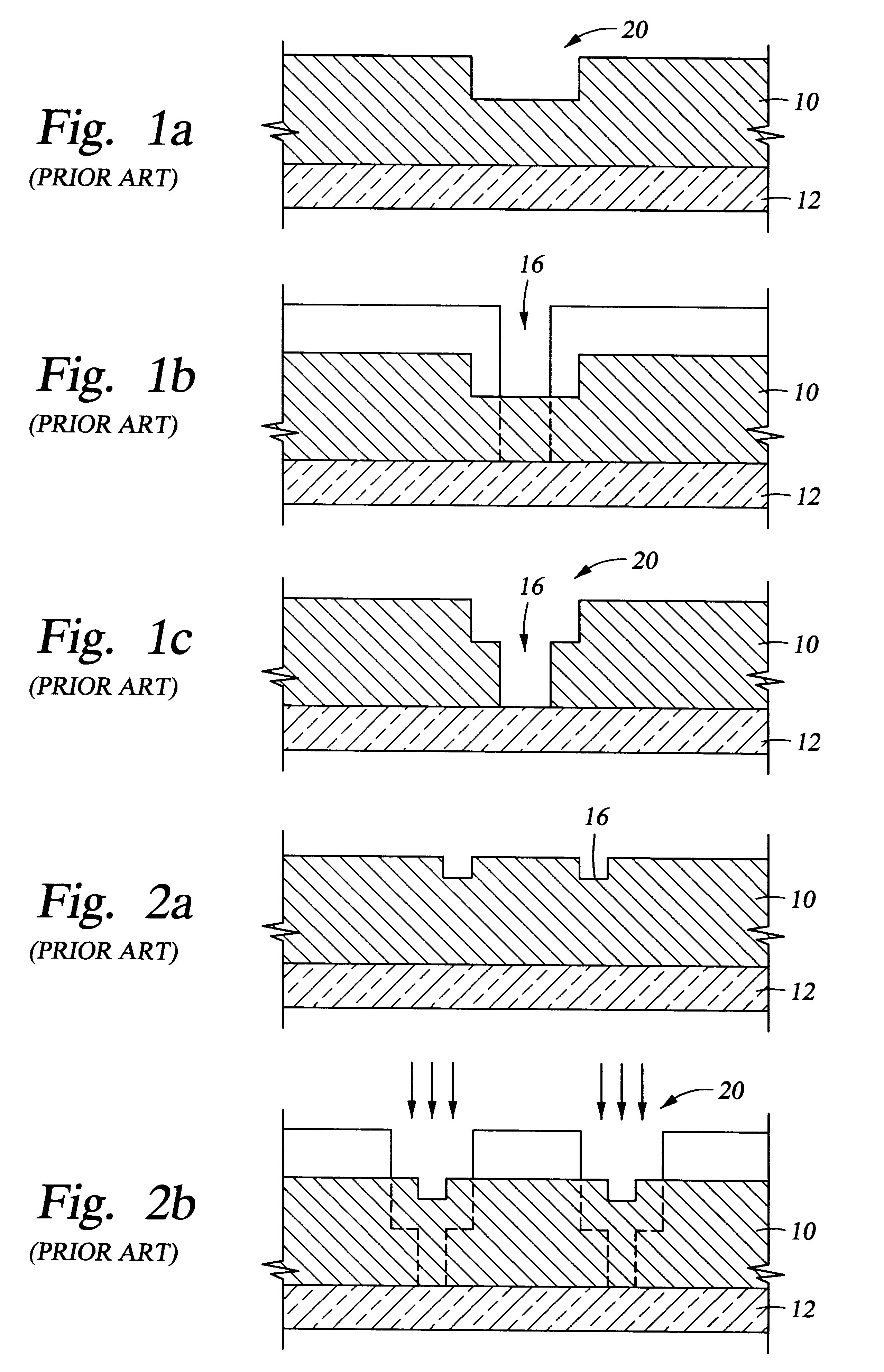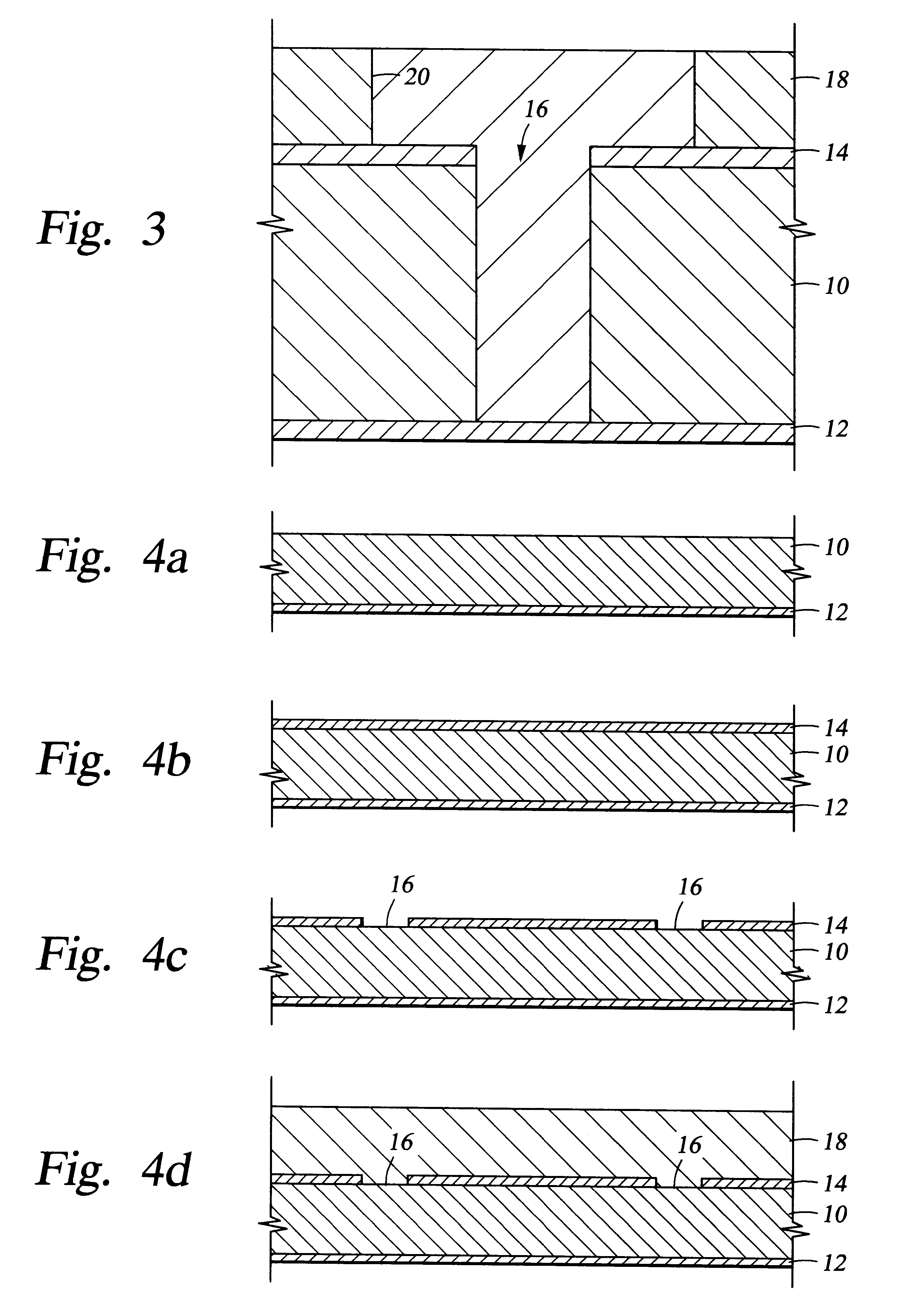An etch stop layer for dual damascene process
a damascene and stop layer technology, applied in the direction of basic electric elements, semiconductor/solid-state device manufacturing, electric apparatus, etc., can solve the problems of difficult control of the depth of the timed etch step, the inability to work with traditional deposition/etch processes for forming interconnects, and the new problems of ic manufacturing processes
- Summary
- Abstract
- Description
- Claims
- Application Information
AI Technical Summary
Problems solved by technology
Method used
Image
Examples
Embodiment Construction
The present invention provides an improved dual damascene structure comprising a low k etch stop, preferably an amorphous, diamond-like carbon (.alpha.-C) material. Low k etch stop is defined herein as an etch stop having a dielectric constant equal to or lower than that of silicon nitride (dielectric constant .about.7.0). A dual damascene structure fabricated in accordance with the invention is shown in FIG. 4h and the method of making the structure is sequentially depicted schematically in FIGS. 4a-4h, which are cross sectional views of a substrate having the steps of the invention formed thereon.
As shown in FIG. 4a, an initial first dielectric layer 10, such as FSG, silicon oxide, or the like, is deposited on the substrate 12 to a thickness of about 5,000 to about 10,000 .ANG., depending on the size of the structure to be fabricated. As shown in FIG. 4b, a low k etch stop 14, such as .alpha.-C, .alpha.-FC, parylene, AF.sub.4, BCB, PAE, oxynitride or silicon carbide, is then depos...
PUM
 Login to View More
Login to View More Abstract
Description
Claims
Application Information
 Login to View More
Login to View More - R&D
- Intellectual Property
- Life Sciences
- Materials
- Tech Scout
- Unparalleled Data Quality
- Higher Quality Content
- 60% Fewer Hallucinations
Browse by: Latest US Patents, China's latest patents, Technical Efficacy Thesaurus, Application Domain, Technology Topic, Popular Technical Reports.
© 2025 PatSnap. All rights reserved.Legal|Privacy policy|Modern Slavery Act Transparency Statement|Sitemap|About US| Contact US: help@patsnap.com



